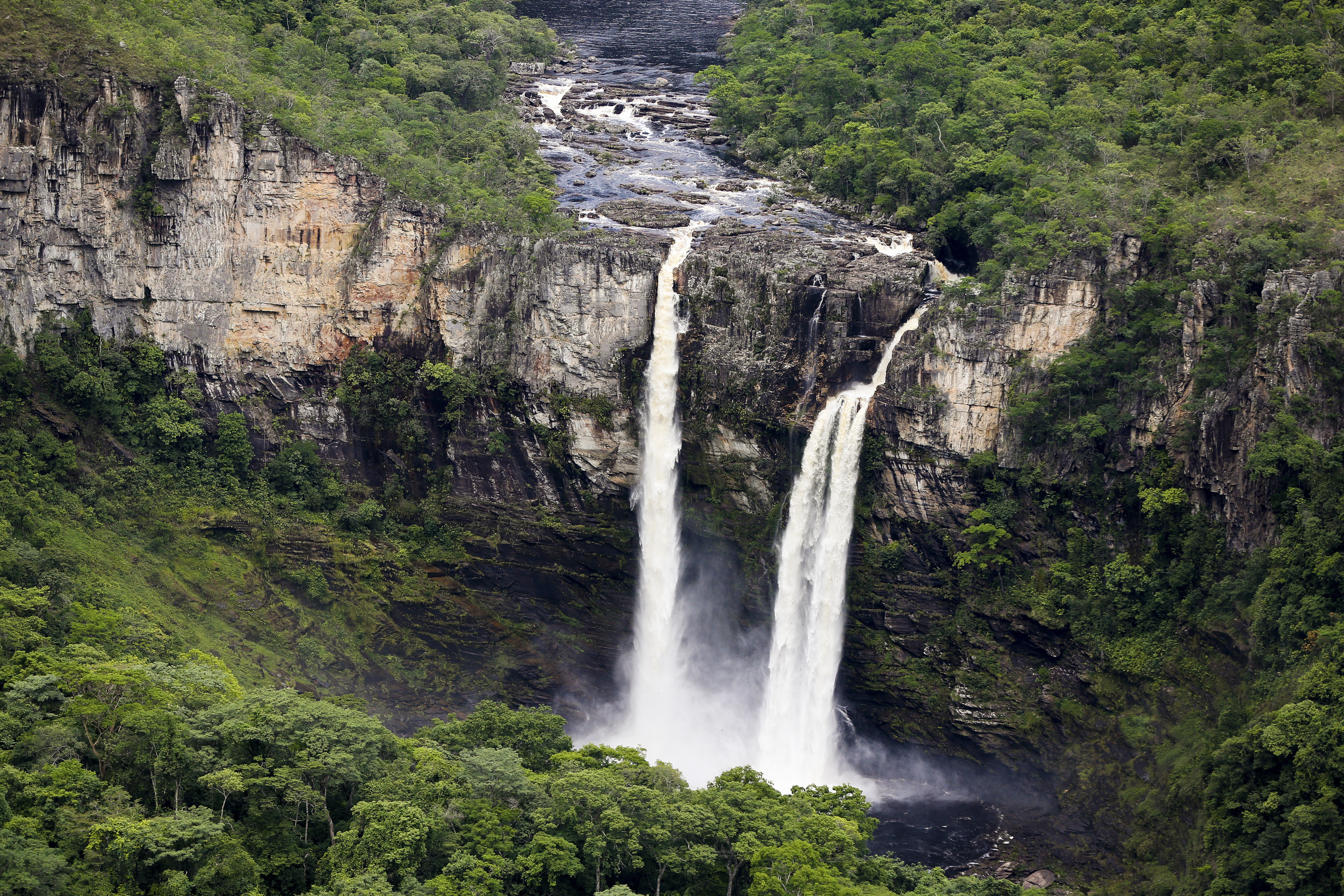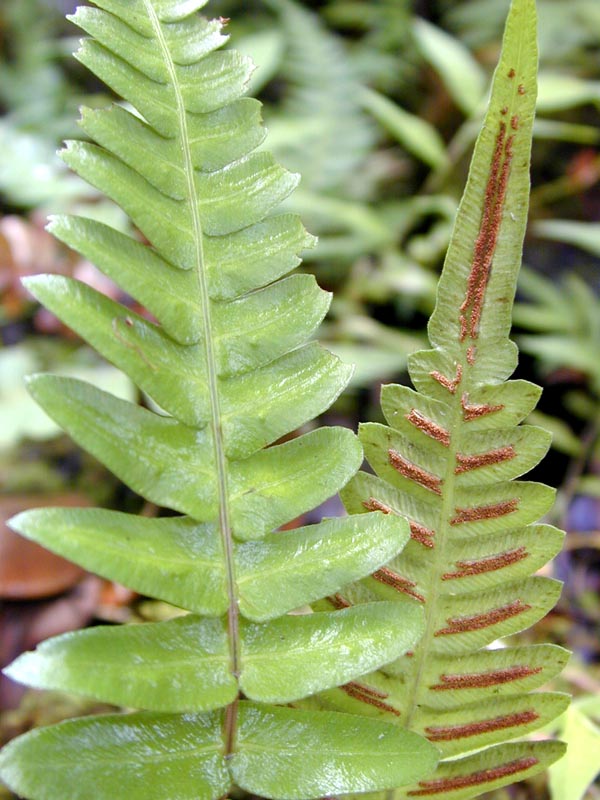|
Jacaranda Ulei
''Jacaranda ulei'' is a flowering tree native to the Cerrado region of Brazil. It was first described by Édouard Bureau and Karl Moritz Schumann in 1897. Description ''Jacaranda ulei'' is a small tree, growing to between and tall. The leaves are 6 to 10 cm in length and Pinnation, bipinnate, having between 8 and 12 pinnae and 6 to 16 leaflets. Leaflets are 15 to 20 cm long, 3 to 5 cm wide and "narrowly oblong" in shape. The flowers are deep purple in colour and arranged in a branched, Panicle form. They are 5 to 10mm long and 4 to 7mm wide with 5 shallow dentate. The fruit is woody and "round to elliptic" in shape, growing 3.5 to 5.5 cm long and 3 to 4 cm wide. The species is a resprouter, with its root system allowing it to survive wild fires and droughts seen in the savanna ecosystem of the Cerrado region of Brazil. Uses The roots of the plant have been used as a traditional folk remedy to treat urinary tract infections, amoebiasis, backache, rheuma ... [...More Info...] [...Related Items...] OR: [Wikipedia] [Google] [Baidu] |
Édouard Bureau
Louis Édouard Bureau (25 May 1830 in Nantes – 14 December 1918 in Paris) was a French physician and botanist. Édouard Bureau began his medical studies in Nantes in 1848, where he held the post of director of the Muséum de Nantes (Nantes Museum). He completed his medical degree in Paris in 1852. In 1872 he obtained a post as a naturalist assistant at the ''Muséum national d'histoire naturelle'' (French National Museum of Natural History) in the laboratory of Adolphe Brongniart, where he replaced Edmond Tulasne. In 1874 he received appointment to the new botany post dealing with classification. Beginning in 1875, he was a director of the herbaria at the museum. He was a professor at the museum from 1874 until he retired in 1905. Adrien Franchet was his assistant in the 80's. He was succeeded by Paul Henri Lecomte. Bureau was one of the founders of the ''Société botanique de France'' (''French Botanical Society'') and was the chairman in 1875, 1883, 1902 and 1905. In 1 ... [...More Info...] [...Related Items...] OR: [Wikipedia] [Google] [Baidu] |
Karl Moritz Schumann
Karl Moritz Schumann (17 June 1851 – 22 March 1904) was a German botanist. Schumann was born in Görlitz. He was curator of the Botanisches Museum in Berlin-Dahlem from 1880 until 1894. He also served as the first chairman of the ''Deutsche Kakteen-Gesellschaft'' (German Cactus Society) which he founded on 6 November 1892. He died in Berlin. Karl Moritz Schumann participated as a collaborator in '' Die Natürlichen Pflanzenfamilien'' by Adolf Engler and K. A. E. Prantl and in '' Flora Brasiliensis'' by Carl Friedrich Philipp von Martius. The genera ''Schumannianthus'' ( Gagnepain), '' Schumanniophyton'' (Harms Harms surname. Notable people with the surname include: * Chris Harms (born 1956), Australian cricketer * Claus Harms (1778–1855), German evangelical minister * Daniil Harms (1905–1942), English transcription: Daniil Kharms, Russian writer * ...), '' Schumannia'' ( Kuntze) and several species were named after him, including: Bibliography * Schumann ... [...More Info...] [...Related Items...] OR: [Wikipedia] [Google] [Baidu] |
Cerrado
The ''Cerrado'' (, ) is a vast ecoregion of tropical savanna in eastern Brazil, particularly in the states of Goiás, Mato Grosso do Sul, Mato Grosso, Tocantins, Minas Gerais, and the Federal District. The core areas of the Cerrado biome are the Brazilian highlands – the ''Planalto''. The main habitat types of the Cerrado consist of forest savanna, wooded savanna, park savanna and gramineous-woody savanna. The ''Cerrado'' also includes savanna wetlands and gallery forests. The second largest of Brazil's major habitat types, after the Amazonian rainforest, the Cerrado accounts for a full 21 percent of the country's land area (extending marginally into Paraguay and Bolivia). The first detailed European account of the Brazilian cerrados was provided by Danish botanist Eugenius Warming (1892) in the book ''Lagoa Santa'', : The above is the original. There are other, later French and Portuguese translations not listed here. in which he describes the main features of th ... [...More Info...] [...Related Items...] OR: [Wikipedia] [Google] [Baidu] |
Pinnation
Pinnation (also called pennation) is the arrangement of feather-like or multi-divided features arising from both sides of a common axis. Pinnation occurs in biological morphology, in crystals, such as some forms of ice or metal crystals, and in patterns of erosion or stream beds. The term derives from the Latin word ''pinna'' meaning "feather", "wing", or " fin". A similar concept is "pectination," which is a comb-like arrangement of parts (arising from one side of an axis only). Pinnation is commonly referred to in contrast to "palmation," in which the parts or structures radiate out from a common point. The terms "pinnation" and "pennation" are cognate, and although they are sometimes used distinctly, there is no consistent difference in the meaning or usage of the two words.Jackson, Benjamin, Daydon; A Glossary of Botanic Terms with their Derivation and Accent; Published by Gerald Duckworth & Co. London, 4th ed 1928 Plants Botanically, pinnation is an arrangement of ... [...More Info...] [...Related Items...] OR: [Wikipedia] [Google] [Baidu] |
Panicle
A panicle is a much-branched inflorescence. (softcover ). Some authors distinguish it from a compound spike inflorescence, by requiring that the flowers (and fruit In botany, a fruit is the seed-bearing structure in flowering plants that is formed from the ovary after flowering. Fruits are the means by which flowering plants (also known as angiosperms) disseminate their seeds. Edible fruits in partic ...) be pedicellate (having a single stem per flower). The branches of a panicle are often racemes. A panicle may have determinate or indeterminate growth. This type of inflorescence is largely characteristic of grasses such as oat and crabgrass, as well as other plants such as pistachio and mamoncillo. Botanists use the term paniculate in two ways: "having a true panicle inflorescence" as well as "having an inflorescence with the form but not necessarily the structure of a panicle". Corymb A corymb may have a paniculate branching structure, with the lower flowers ha ... [...More Info...] [...Related Items...] OR: [Wikipedia] [Google] [Baidu] |
Resprouter
Resprouters are plant species that are able to survive fire by the activation of dormant vegetative buds to produce regrowth. Plants may resprout from a bud bank that can be located in different places, including in the trunk or major branches ( epicormic shoots) or in belowground structures like lignotubers, bulbs, and other structures. Resprouters characterize chaparral, fynbos, kwongan, savanna and other landscapes that experience periodic fires. See also *Adventitiousness *Coppicing * Crown sprouting *Cutting (plant) *Geoxyle A geoxyle is a plant in which an enlarged, woody structure occurs beneath the surface of the ground. Such plants have developed independently in various plant lineages, mostly evolving in the Pliocene and subsequently diverging within the last two m ... * Water sprout References Wildfire ecology Plant morphology Plant physiology {{botany-stub ... [...More Info...] [...Related Items...] OR: [Wikipedia] [Google] [Baidu] |
Savanna
A savanna or savannah is a mixed woodland-grassland (i.e. grassy woodland) ecosystem characterised by the trees being sufficiently widely spaced so that the canopy does not close. The open canopy allows sufficient light to reach the ground to support an unbroken herbaceous layer consisting primarily of grasses. According to '' Britannica'', there exists four savanna forms; ''savanna woodland'' where trees and shrubs form a light canopy, ''tree savanna'' with scattered trees and shrubs, ''shrub savanna'' with distributed shrubs, and ''grass savanna'' where trees and shrubs are mostly nonexistent.Smith, Jeremy M.B.. "savanna". Encyclopedia Britannica, 5 Sep. 2016, https://www.britannica.com/science/savanna/Environment. Accessed 17 September 2022. Savannas maintain an open canopy despite a high tree density. It is often believed that savannas feature widely spaced, scattered trees. However, in many savannas, tree densities are higher and trees are more regularly spaced than in for ... [...More Info...] [...Related Items...] OR: [Wikipedia] [Google] [Baidu] |
Amoebiasis
Amoebiasis, or amoebic dysentery, is an infection of the intestines caused by a parasitic amoeba ''Entamoeba histolytica''. Amoebiasis can be present with no, mild, or severe symptoms. Symptoms may include lethargy, loss of weight, colonic ulcerations, abdominal pain, diarrhea, or bloody diarrhea. Complications can include inflammation and ulceration of the colon with tissue death or perforation, which may result in peritonitis. Anemia may develop due to prolonged gastric bleeding. Cysts of ''Entamoeba'' can survive for up to a month in soil or for up to 45 minutes under fingernails. Invasion of the intestinal lining results in bloody diarrhea. If the parasite reaches the bloodstream it can spread through the body, most frequently ending up in the liver where it can cause amoebic liver abscesses. Liver abscesses can occur without previous diarrhea. Diagnosis is typically made by stool examination using microscopy, but it can be difficult to distinguish ''E. hystolitica'' fro ... [...More Info...] [...Related Items...] OR: [Wikipedia] [Google] [Baidu] |
Rheumatism
Rheumatism or rheumatic disorders are conditions causing chronic, often intermittent pain affecting the joints or connective tissue. Rheumatism does not designate any specific disorder, but covers at least 200 different conditions, including arthritis and "non-articular rheumatism", also known as "regional pain syndrome" or "soft tissue rheumatism". There is a close overlap between the term soft tissue disorder and rheumatism. Sometimes the term "soft tissue rheumatic disorders" is used to describe these conditions. The term "Rheumatic Diseases" is used in MeSH to refer to connective tissue disorders. The branch of medicine devoted to the diagnosis and therapy of rheumatism is called rheumatology. Types Many rheumatic disorders of chronic, intermittent pain (including joint pain, neck pain or back pain) have historically been caused by infectious diseases. Their etiology was unknown until the 20th century and not treatable. Postinfectious arthritis, also known as reactiv ... [...More Info...] [...Related Items...] OR: [Wikipedia] [Google] [Baidu] |
Jacaranda
''Jacaranda'' is a genus of 49 species of flowering plants in the family Bignoniaceae, native to tropical and subtropical regions of the Americas. The generic name is also used as the common name. The species '' Jacaranda mimosifolia'' has achieved a cosmopolitan distribution due to introductions, to the extent that it has entered popular culture. It can be found growing wild in Central America, the Caribbean, Spain, southern Africa, China, and Australia. Etymology The name is of South American (more specifically Tupi-Guarani) origin, meaning fragrant. The word ''jacaranda'' was described in ''A supplement to Mr. Chambers's Cyclopædia'', 1st ed., (1753) as "a name given by some authors to the tree the wood of which is the log-wood, used in dyeing and medicine" and as being of Tupi-Guarani origin, by way of Portuguese. Although not consistent with the Guarani source, one common pronunciation of the name in English is given by . Description The species are shrubs to large t ... [...More Info...] [...Related Items...] OR: [Wikipedia] [Google] [Baidu] |
Trees Of Brazil
In botany, a tree is a perennial plant with an elongated stem, or trunk, usually supporting branches and leaves. In some usages, the definition of a tree may be narrower, including only woody plants with secondary growth, plants that are usable as lumber or plants above a specified height. In wider definitions, the taller palms, tree ferns, bananas, and bamboos are also trees. Trees are not a taxonomic group but include a variety of plant species that have independently evolved a trunk and branches as a way to tower above other plants to compete for sunlight. The majority of tree species are angiosperms or hardwoods; of the rest, many are gymnosperms or softwoods. Trees tend to be long-lived, some reaching several thousand years old. Trees have been in existence for 370 million years. It is estimated that there are some three trillion mature trees in the world. A tree typically has many secondary branches supported clear of the ground by the trunk. This trunk typically ... [...More Info...] [...Related Items...] OR: [Wikipedia] [Google] [Baidu] |





